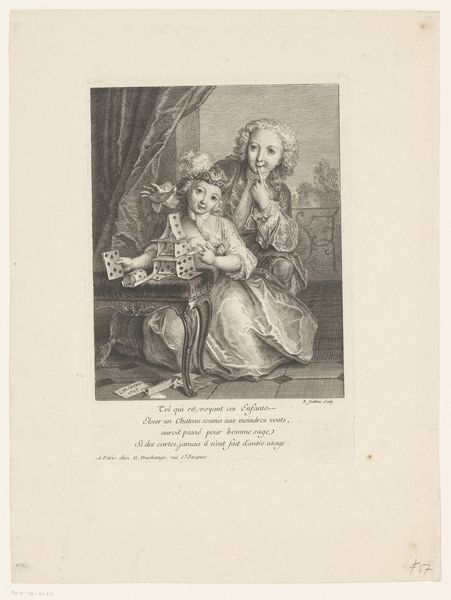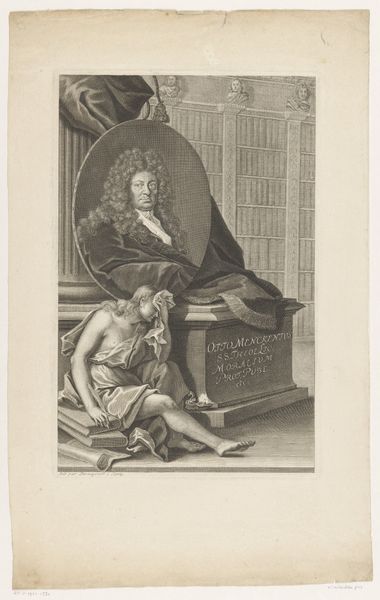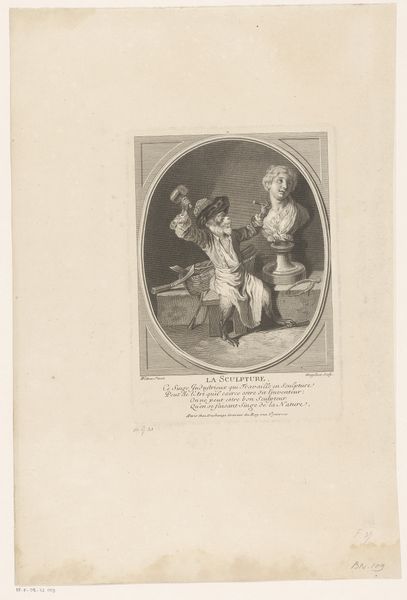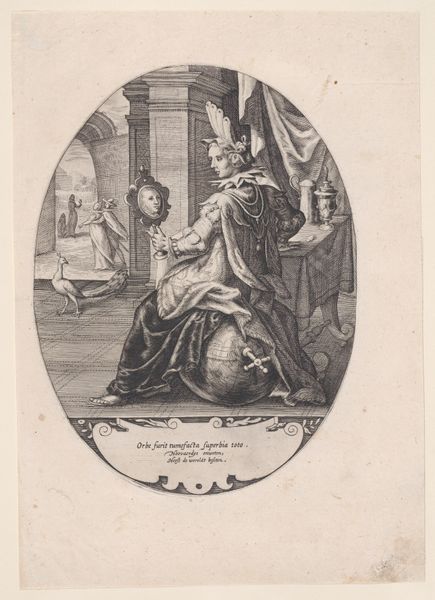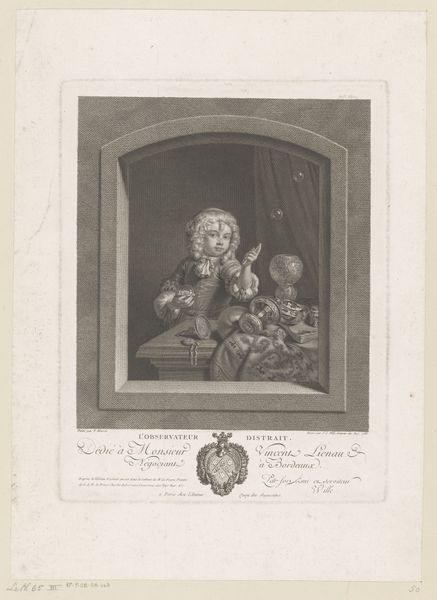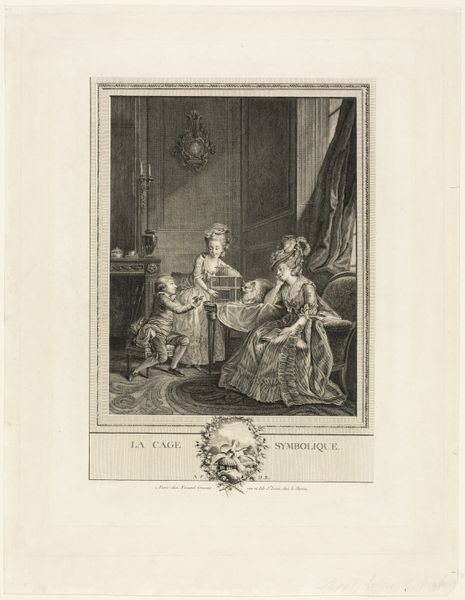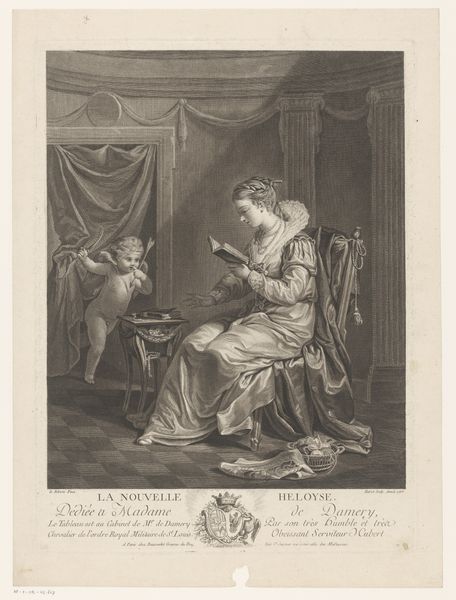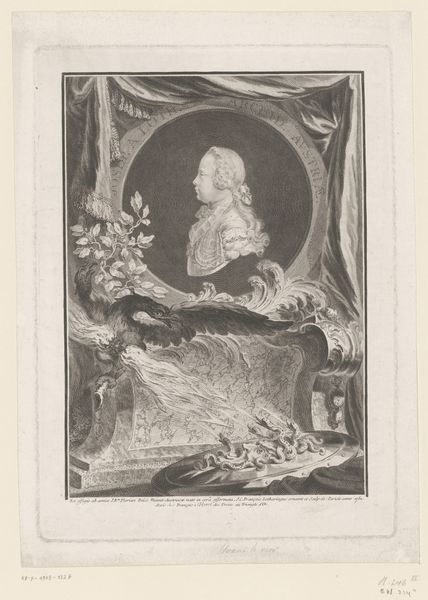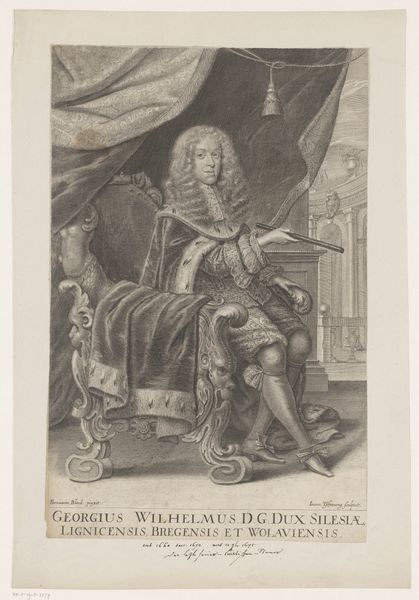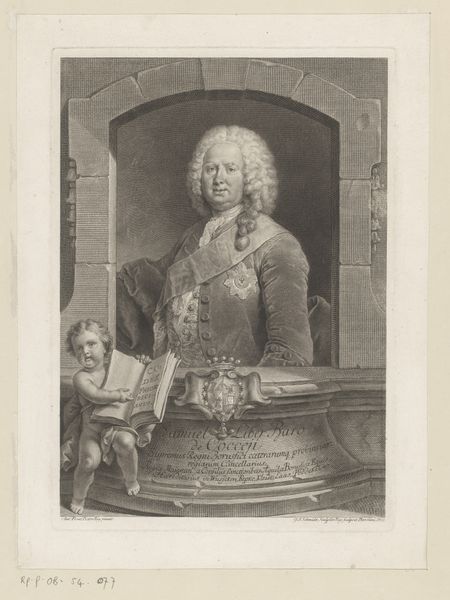
drawing, intaglio, engraving
#
portrait
#
drawing
#
baroque
#
intaglio
#
figuration
#
line
#
history-painting
#
engraving
Dimensions: height 430 mm, width 272 mm
Copyright: Rijks Museum: Open Domain
Editor: Here we have Gaspard Duchange’s engraving, "Antoine Coypel met zoon aan schildersezel," from 1702. It has a somber mood, yet the composition seems so carefully constructed with strong linearity. What formal elements stand out to you in this piece? Curator: Notice how Duchange meticulously articulates the light reflecting on textures, not just in the clothing but also across the painting surface and throughout the architectural constructs visible in the background. The texture of his curly wig contrasts starkly with the flat picture on the easel. That juxtaposition itself invites contemplation on the essence of representation. Editor: That’s fascinating! I see what you mean about the contrast of textures and surfaces. How would you say the artist's choice of medium – this detailed engraving – informs the overall reading of the portrait? Curator: Engraving, with its emphasis on line and tone, serves to formalize the scene, imposing a graphic order that almost transcends the sentimentality often found in family portraits. Duchange uses line to define form and shadow, creating a clear distinction between elements and reinforcing a structured interpretation. The contrast pulls attention toward a highly constructed nature of the depiction. Editor: It almost feels like we're analyzing not just a father and son but also the mechanics of artistic representation itself, laid bare through Duchange's choices. Thank you, that perspective really sharpened my view of the work. Curator: My pleasure. Sometimes, the strictest form reveals the deepest content.
Comments
No comments
Be the first to comment and join the conversation on the ultimate creative platform.
